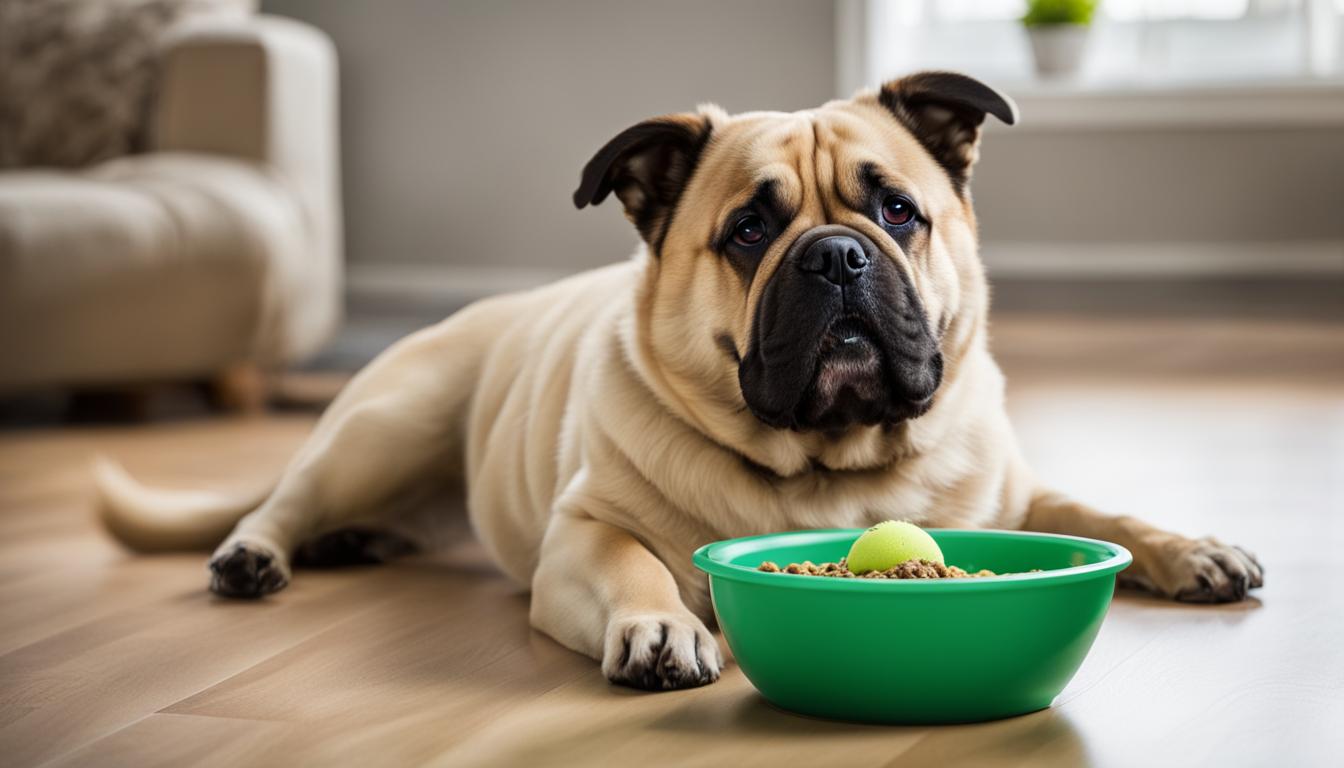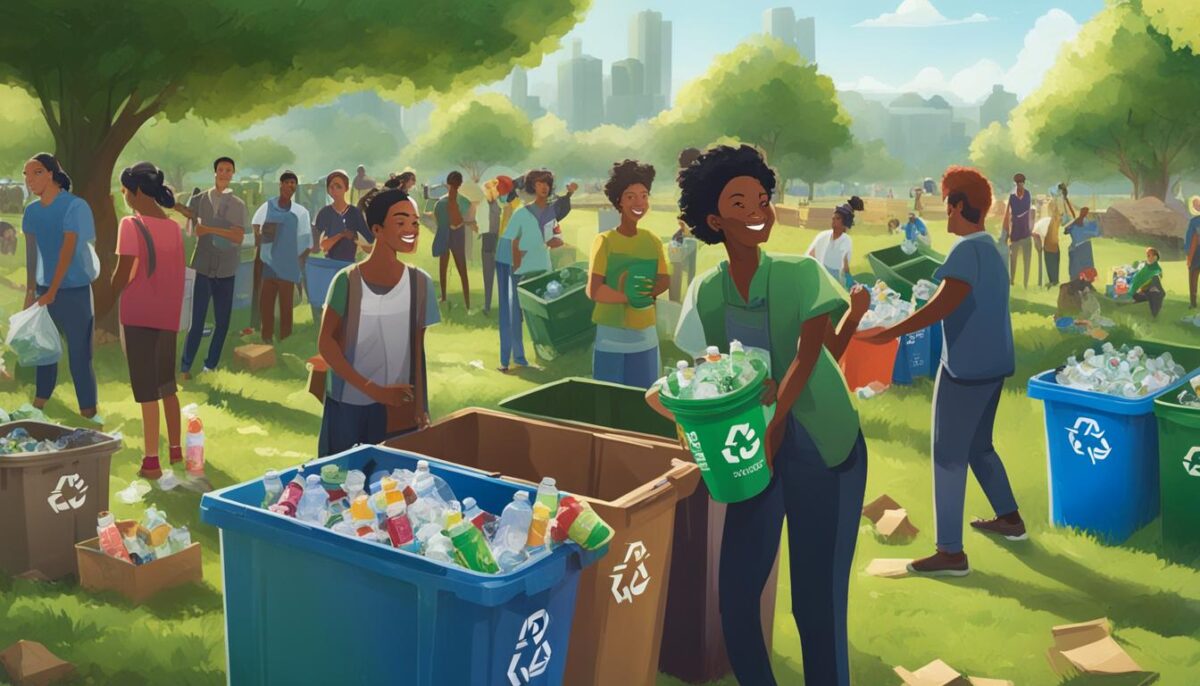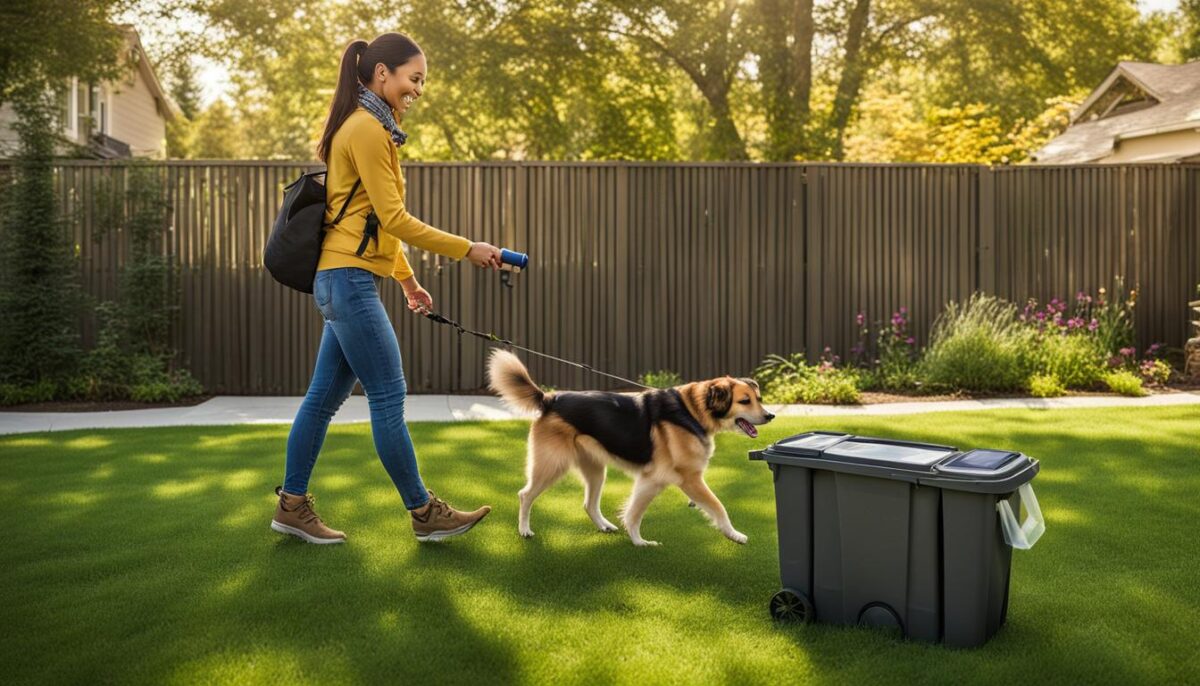Welcome to our article series on pet care during the holiday season! In this section, we’ll talk about why it’s important to be careful about what you feed your pets. During the celebrations, we may feel like giving our pets treats. But, it’s important to remember that some foods can harm them. Let’s explore why you should never stuff your dog and the risks of overfeeding.
Feeding your pets the wrong foods can be very dangerous and even life-threatening. We want to ensure that you are well-informed and equipped to keep your pets safe and healthy. Let’s explore the risks of overfeeding your pets during the holidays.
The Dangers of Holiday Foods for Pets
During holiday festivities, remember that some foods are not safe for our pets. Holiday foods and ingredients can harm pets, putting their health at risk. Here are some of the key dangers to be aware of:
Sugar-free treats and xylitol:
Sugar-free treats may seem safe, but they often have a sweetener called xylitol. Xylitol is very harmful to dogs. It makes their insulin levels drop , causing low blood sugar. To keep your pet safe, make sure sugar-free treats are out of reach.
Onions and garlic:
Many people add onions and garlic to holiday dishes, but these can be harmful to pets. They contain compounds that can cause damage to red blood cells, leading to anemia. To keep your pets safe, it’s best not to share foods with onions or garlic, even in small amounts.
Grapes and raisins:
Grapes and raisins may be a delicious snack for us, but they can cause kidney failure in dogs. We don’t know exactly how this toxicity works, but even a little bit can be very dangerous. It’s essential to keep all grapes and raisins away from your pets at all times.
Other hazards:
It’s not the food itself that can be dangerous for pets during the holidays. Certain holiday plants, such as poinsettias and mistletoe, can be toxic if ingested. Christmas tree sap, electric cords, tinsel, and candles can make your stomach upset. They can also cause burns and shocks. Be mindful of these hazards and take steps to create a safe environment for your pets.
| Foods to Avoid | Danger to Pets |
|---|---|
| Xylitol (found in sugar-free treats) | Toxicity, hypoglycemia |
| Onions and garlic | Anemia, gastrointestinal upset |
| Grapes and raisins | Kidney failure |
| Poinsettias and mistletoe | Toxicity |
| Live Christmas tree sap, electric cords, tinsel, candles | Risk of injury, burns, and shocks |
Understanding Part Sizes and Pet Obesity
When it comes to keeping our pets healthy, part control plays a crucial role. Overfeeding can lead to pet obesity, which is a common problem among dogs and cats. like humans, pets can gain weight when they consume more calories than they burn. If you carry too much weight, it can cause health problems like diabetes and high blood pressure. It can also lead to heart disease and osteoarthritis.
Monitoring part sizes is essential to prevent overfeeding. To determine how much food your pet needs, consider their size, age, activity level, and health. Make sure to follow the feeding instructions from your vet or pet food company. Remember, treats contribute to your pet’s calorie intake as well, so be mindful of how many you give them.
During the holidays, it’s crucial to watch how much you eat, since there are so many tempting treats. It’s best to feed your pet their regular food instead of sharing your holiday meal. If you’re not sure how much to feed your pet, ask your vet for advice. They can assist you in figuring out the correct amount of food to keep your pet healthy. This will prevent them from becoming overweight.
| Signs of Pet Obesity | Health Risks of Pet Obesity |
|---|---|
|
|
To keep your pet healthy, control their food portions and avoid overfeeding them.
Choosing the Right Foods for Your Pet
When you feed your pet, think about their nutrition and how it affects the environment. Eating meat, especially red meat, causes climate pollution. Choosing pet foods with less meat helps. Luckily, there are lots of dog food options available in the market.
If you care about the environment and have a pet, you might consider mass-market dog foods. These foods have less meat and use nutritious but less popular meat sources. These brands often incorporate alternative protein sources like poultry, fish, or plant-based ingredients. You can help reduce the carbon footprint of meat production by cutting back on your pet’s beef.
Some people feed their pets different diets like bugs or plants instead of meat. These diets have a lower climate impact compared to traditional meat-based diets. Insect-based pet foods are a new trend. They use insects for nutrition instead of traditional farming. Pets with specific dietary needs or environmental concerns can enjoy vegetarian diets. These diets use plant-based protein sources instead.
| Food Option | Climate Impact | Nutritional Value | Availability |
|---|---|---|---|
| Premium Dog Foods | Low | High | Widely available |
| Alternative Protein Sources | Lower than beef | Varies depending on the source | Increasingly available |
| Insect-based Diets | Lowest | High | Emerging market |
| Vegetarian Diets | Low | Varies depending on the formulation | Specialty options |
The Benefits of Choosing the Right Foods
To keep the environment safe and your pet healthy, pick pet food or change their diet. Good dog foods have the right nutrients for a happy, healthy pet. When done right, alternative diets can provide balanced nutrition for your pet.
When picking your pet’s food, think about their needs, preferences, and dietary restrictions. Talking to your vet can help you feed your pet a sustainable diet that meets their needs.
The Power of Treating Landfill Prevention
Even your pet can help reduce waste and promote sustainability. You can help the environment by giving your pet the food you don’t eat. To avoid digestive issues, it’s important to keep your pet’s diet consistent. But, you can reduce waste by giving them safe food leftovers.
Food waste is a big problem all over the world. Diverting food scraps from landfills lessens its environmental impact. Organic waste in landfills breaks down and produces harmful greenhouse gases, like methane. These gases contribute to climate change. You can help the environment by using leftover food as pet meals instead of throwing it away.
To keep your pet safe, don’t give them foods that can harm their health. Stick to ingredients like lean, cooked meats, vegetables, or whole grains. To keep animals safe, don’t use seasonings, spices, garlic, onions, or certain fruits in your food.
Feeding your pet leftovers reduces waste and helps you bond with your furry friend. Make sure to adjust their regular meals to maintain a balanced diet. We can help by not using landfills and by picking options for pets and the planet.
The Role of Pet Owners in Fighting Climate Change
As a pet owner, you have the power to make a positive impact on the fight against climate change. The food and habits of your pet can help reduce global warming and climate pollution.
One of the key ways you can help is by reducing meat consumption. The production of meat, especially beef, has a large carbon footprint. Dogs and cats eat a lot of meat in the United States. You can reduce the impact of your pet’s diet on the climate by choosing sustainable pet food with less meat. You can also consider insect-based or vegetarian options.
Being a climate-conscious dog owner goes beyond the food you feed your pet. It also involves considering the environmental impact of other pet-related activities. One way to be friendly is by using biodegradable poop bags. Another way is to choose toys and accessories made from sustainable materials. Instead of buying new items, you can repurpose things to reduce waste.
The Benefits of Making Climate-Conscious Choices
As a pet owner, you can help fight global warming by making climate-conscious choices. Not only will you help reduce climate pollution, but you’ll also set an example for others to follow. Our actions influence others and can encourage them to make sustainable choices.
| Benefit | Explanation |
|---|---|
| Reduced carbon footprint | Choosing sustainable pet food options and reducing meat consumption helps decrease greenhouse gas emissions. |
| Preservation of natural resources | By opting for eco-friendly pet products, you contribute to the preservation of natural resources such as water and forests. |
| Healthier pet | Feeding your pet a balanced and nutritious diet supports their overall health and well-being. |
| Positive influence | Being a climate-conscious pet owner sets an example for others and encourages them to make more sustainable choices. |
As a pet owner, you can help fight climate change by thinking about your choices. You can create a greener future for your pet and the planet in many ways. Reduce meat consumption, choose pet products, or promote climate-consciousness to others.
Conclusion
During the holiday season and throughout the year, it’s crucial to be mindful of what you feed your pets. Your pets depend on you to keep them safe and healthy. To do this, it’s crucial to avoid giving them harmful foods or feeding them too much.
Remember, Never Stuff Your Dog or overfeed dogs with sugary treats, onions, or grapes. These foods can be harmful and even deadly to your four-legged companions. It’s best to stick to lean, cooked turkey and safe fruits and vegetables in moderation.
To prevent obesity and health issues in pets, it is important to also watch their part sizes. If you eat too much, it can cause health problems like diabetes, high blood pressure, heart disease, and osteoarthritis.
Finally, as a pet owner, you should think about how your pet’s food affects the environment. You can help the climate by choosing pet foods made with alternative protein sources. This can reduce carbon emissions. Make these choices to keep your pets healthy and help the planet at the same time.
FAQ
Can I feed my pet leftovers during the holidays?
You can reduce waste by feeding your pet leftovers or food you won’t eat. But make sure the leftovers won’t harm your pet’s digestion. To keep them healthy, give them leftovers and stick to a consistent diet.
What holiday foods should I avoid feeding my pets?
It’s important to be cautious about what you feed your pets during the holidays. Don’t give them sugary treats, chocolate, onions, grapes, garlic, or stuffing. These can be toxic and even deadly to dogs and cats. Some holiday plants, such as poinsettias, mistletoe, and lilies, can be harmful to pets. Keep these out of reach to ensure your pet’s safety.
How much should I feed my pet to prevent obesity?
During the holidays, it’s important to watch how much you feed your pet to avoid overfeeding. Feeding too much can make pets obese, which raises the chance of health problems. To know how much food to give your pet, ask your vet about the right part size for its breed, age, and activity level.
Can I choose pet foods that are better for the environment?
Yes, you can make choices that have less impact on the climate. Select dog food options that are easy to find and use nutritious, uncommon meats. Reducing meat consumption, especially beef, can contribute to reducing climate pollution. Some pet owners feed insects or vegetarian food to their pets to help the environment.
How can I reduce food waste while feeding my pet?
When you give your pet your extra food, it reduces waste and prevents food waste from going to landfills. To keep your pet healthy, make sure to feed them a consistent diet. This will prevent digestive issues. Sometimes, it’s okay to give your pet some leftover food. Make sure it’s safe and the right amount.
What is the role of pet owners in fighting climate change?
As a pet owner, your choice of pet food can play a role in reducing your carbon footprint. Meat production causes global warming. In the U.S., dogs and cats eat a lot of meat. To combat climate change and create a sustainable future, we can make small changes. We can choose pet food, eat less meat, and explore alternative diets.


